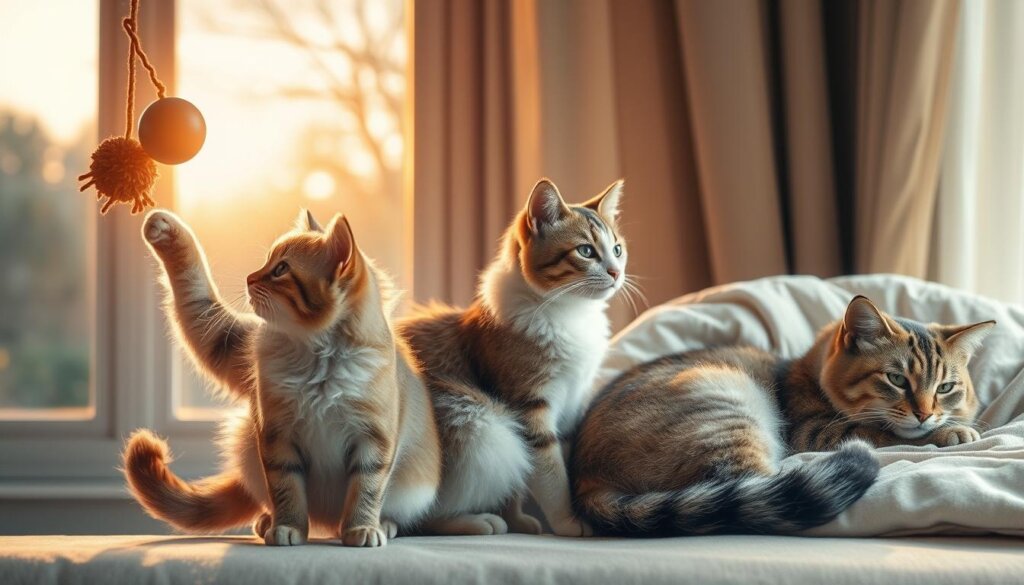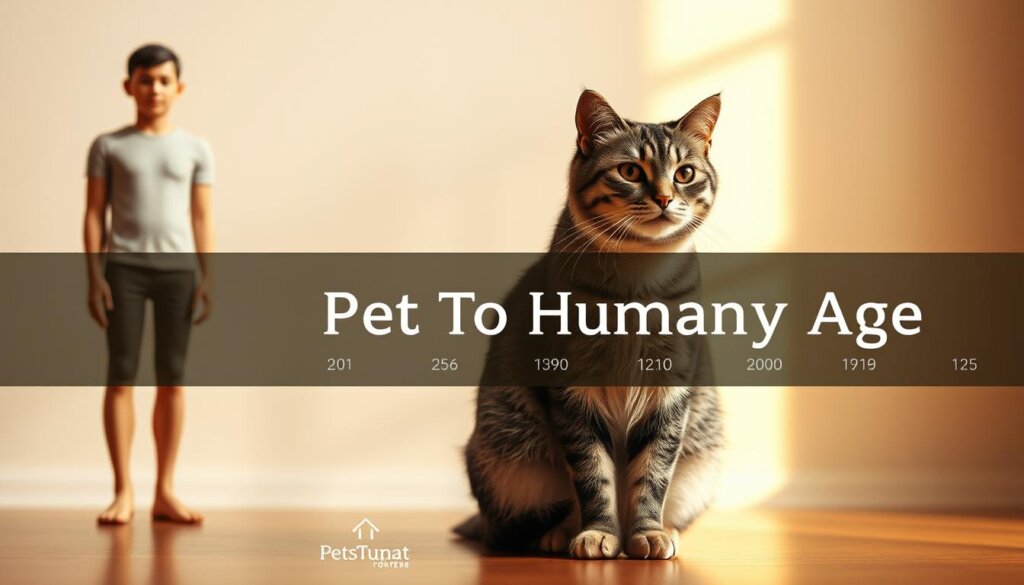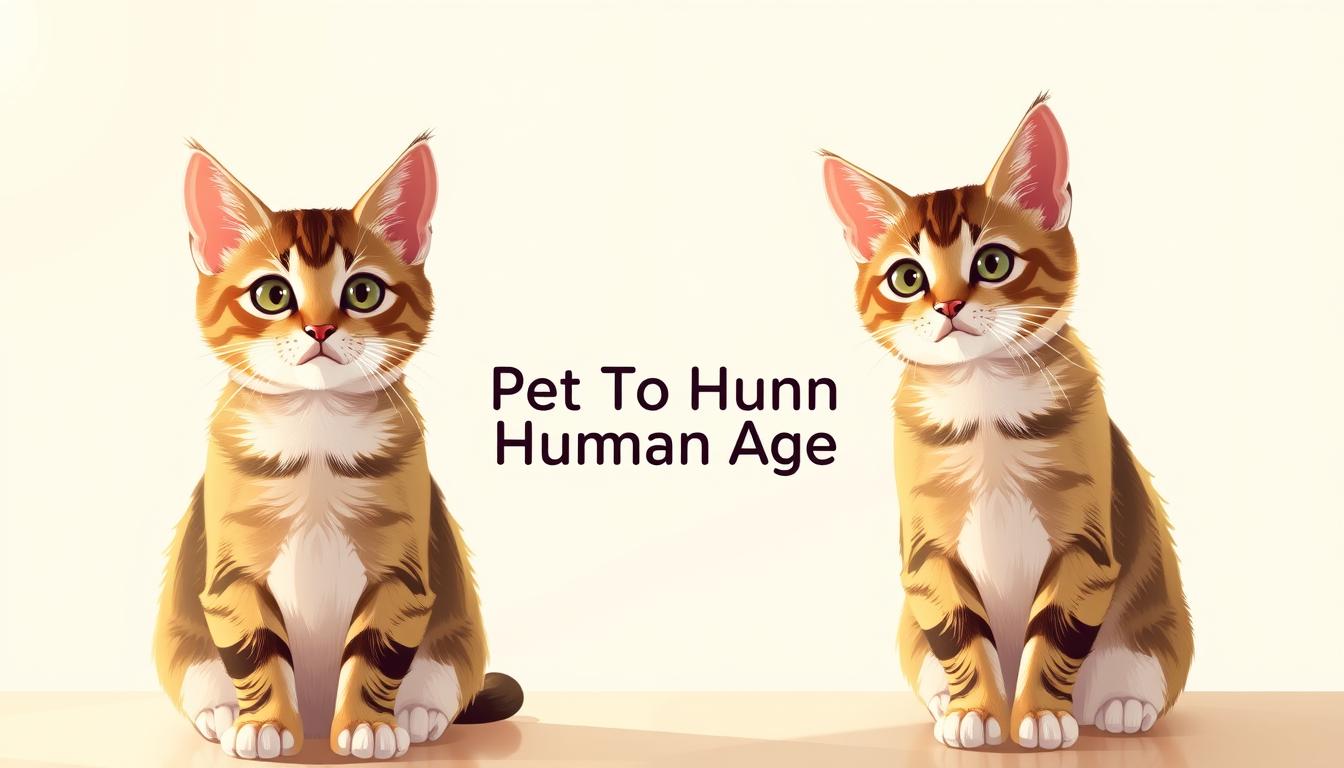Simple Conversion of Your Cat’s Age to Human Years: Understanding your cat’s age in human years can help you nourish them better. Pets age much faster than humans do, but if we think of their age in human terms it makes keeping track of their needs that much easier. Some kitties have epic runs — 34 years, which is 153 in people years!
Today’s veterinary advances are increasing the lifespan, so knowledge of one’s age matters all the more. Different breeds will age at different rates—Siamese and Manx can have levels of energy that differ as they age. Although your companion will never develop into a petulant adolescent, it could be a teen-like play day with your pal, or you might learn that your pal has developed a dad-like fondness for napping, and knowing which stage describes your buddy can serve as a guide to tailor their care.
Tools are also available to offer quick conversions on the go. Read on to find out how breed, health and lifestyle play a role in how quickly a pet ages.
Key Takeaways
- Tracking your pet’s age in human years aids follow advancement.
- Some breeds age differently than others do.
- The feline life stages infographics increase average lifespans of veterinary care.
- Energy levels alter with age phases.
- The conversion offers immediate or slab by slab to useful details.
Understanding life stages. Six months are like the teenager sections in energy and investigation. The training period at two is just as full-grown as a 24-year-old person. Indoor kittens continue more than outdoor ones mainly, 16 to18 hours versus 13-to 14 hours, regardless of the reduce danger society.
Why you need to know a domestic feline’s age in human years.
Life stages help guarantee the most reliable care and give you a better chance of receiving your kitten truthful life inquiries about nutrition. Whether your companion is a wild kitten or an intelligent older, the life stage ensures they are living.
Understanding life stages.
Six months are like the teenager sections in energy and investigation. The training period at two is just as full-grown as a 24-year-old person. Indoor kittens continue more than outdoor ones mainly, 16 to18 hours versus 13-to 14 hours, regardless of the reduce danger society.

Preparing for Age-Related Health Changes
Senior cats (11+ years) need regular vet checks for kidney disease or arthritis. Outdoor pets face higher risks like trauma or infections. The Cornell Feline Health Center recommends year-round parasite prevention for all ages.
| Lifestyle | Average Lifespan | Common Risks |
|---|---|---|
| Indoor | 16–18 years | Obesity, dental issues |
| Outdoor | 13–14 years | Trauma, FeLV, poisoning |
Pro Tip: Adjust diet and play routines as your pet ages to support their changing health needs.
How Cat Years Compare to Human Years
Your furry companion’s growth happens at lightning speed compared to ours. While we see gradual changes over decades, their early stages condense major milestones into just a few years old.

The Rapid Aging of Cats in Early Years
The first year alone equals about 15 in human age. By eight weeks, kittens grow eight times their birth size—like a human baby hitting toddlerhood in months. At one month, they resemble a six-month-old infant in curiosity and coordination.
By two, they reach full maturity, akin to a college graduate. The AAHA notes this phase matches prime adulthood physically and behaviorally. Pro Tip: This explosive growth demands nutrient-rich food and frequent vet visits.
Slower Aging After the First Two Years
After age two, aging slows to roughly four human years per annum. A four-year-old pet mirrors a 35-year-old’s vitality, while a ten-year-old aligns with a 57-year-old’s pace.
Refer to an age chart to track these shifts. Indoor lifestyles often stretch lifespans, but all pets benefit from tailored care as they transition from playful youth to dignified elders.
Using a Cat Years to Human Years Calculator
Ever wondered how old your pet would be if they walked on two legs? Precise formulas help bridge the gap between their timeline and ours. Tools range from simple charts to advanced algorithms considering lifestyle factors.
The Standard Calculation Method
The AAHA’s widely accepted formula works like this:
- First two years: Each year equals ~12.5 human years (e.g., a 2-year-old pet = 25).
- After age two: Subtract 2, multiply by 4, then add 24. A 5-year-old: (5-2)×4 + 24 = 36.
This aligns with veterinary research showing rapid early development slowing post-maturity.
Alternative Formulas
*The Cat Bible* suggests kittens age faster initially. An 8-month-old equals a 15-year-old human—sharper than the AAHA’s 12-year estimate. For seniors (16+), multipliers decrease to reflect slower aging.
“Lifestyle dramatically impacts longevity. Indoor pets often outlive outdoor ones by 3–5 years.”
Download a cat age chart for quick reference. Adjust calculations based on environment, diet, and breed-specific traits to personalize care.
Cat Age Chart: See Your Cat’s Human Age
Tracking your pet’s milestones becomes simpler with visual references. A cat age chart offers a snapshot of how their development aligns with ours. From playful kittens to dignified elders, each stage demands tailored care.
From Kitten to Senior: A Quick Guide
This table compares key stages using standard veterinary formulas:
| Feline Age | Human Equivalent | Life Stage |
|---|---|---|
| 6 months | 9 years | Kitten (Teenager) |
| 2 years | 24 years | Adult |
| 10 years | 56 years | Mature |
| 18 years | 88 years | Senior |
How Environment Impacts Longevity
Indoor cats typically age slower, with a 5-year-old equating to 36 in human terms. Outdoor cats face higher risks, aging 33% faster—a 5-year-old may resemble a 48-year-old.
Even pets with mixed lifestyles (90% indoors) need proactive vet care. The Guinness record-holder lived 38 years, proving exceptional care can defy averages.
“Regular checkups catch age-related issues early, whether your companion roams or stays home.”
Factors That Influence How Cats Age
Several key elements shape how quickly or slowly pets mature. While breed plays a role, daily habits and genetics are equally powerful. Tailoring care to these factors influence aging ensures a longer, happier life.
Indoor vs. Outdoor Lifestyles
Safety matters. Indoor companions live nearly twice as long—90% reach 15+ years, compared to 50% of outdoor pets. Trauma causes 60% of emergency visits for those who roam freely.
FeLV (feline leukemia virus) cuts lifespans by 2–3 years. Spaying or neutering adds 2–5 years by reducing cancer risks. Pro Tip: Even partial outdoor access requires vaccines and parasite prevention.
Diet and Nutrition Impact
Diet nutrition fuels vitality. Wet food boosts hydration, while omega-3s support joints and coats. Tartar buildup starts within 1–5 years, so dental care prevents missing teeth and infections.
Senior pets need protein to maintain muscle mass. Portion control avoids obesity, which strains organs. Always choose vet-approved formulas for each life stage.
Health and Genetic Factors
Some breeds defy averages. Manx and Siamese often outlive others due to health genetic advantages. Regular bloodwork catches issues like kidney disease early.
Arthritis and dental disease are common in elders. Annual vet checks spot subtle changes, ensuring timely treatment.
“Preventive care is cheaper—and kinder—than emergency interventions.”
Signs of Aging in Cats
Spotting early changes in your pet helps tailor care as they grow older. Subtle shifts in teeth, coat, and energy levels signal different life stages. Recognizing these signs aging ensures timely adjustments to their routine.
Changes in Teeth and Gums
Dental health reveals age like rings on a tree. Kittens develop milk teeth at 2–4 weeks, while permanent ones emerge by 4 months. Stains or tartar buildup appear by 1–2 years, and missing teeth become common after a decade.
| Age | Dental Changes |
|---|---|
| 1–2 years | Yellow stains on a few teeth |
| 3–5 years | All teeth stained |
| 10+ years | Tooth loss, gum recession |
Fur Texture and Color Shifts
A once-glossy coat may turn coarse or develop gray patches (“salt-and-pepper”) by age 10. Thinning fur or dullness often reflects dietary gaps or slower grooming habits. Regular brushing boosts circulation and shine.
Activity Level and Mobility
Senior pets sleep 18–20 hours daily, compared to 12–16 in youth. Reduced playtime may signal arthritis—30% of elders develop joint pain. Gentle exercises like feather chasing keep muscles active without strain.
“Annual vet checks catch subtle changes early, like cloudiness in eyes (common after age 12).”
How to Help Your Cat Live a Long, Healthy Life
Longevity isn’t luck; it’s built through intentional care strategies. Tailoring routines to your pet’s life stage boosts their health and happiness. From nutrition to play, every choice matters.
Prioritize Preventive Vet Visits
Annual vet checkups add 2–3 years to lifespans. Semi-annual exams catch early signs of kidney disease or arthritis in seniors. The AAHA recommends core vaccines and dental cleanings every 1–2 years.
Smart Diet and Exercise Habits
Combine diet exercise for optimal results. Puzzle feeders cut obesity risks by 40%, while feather wands maintain joint mobility. Wet food and water fountains support hydration.
| Age Group | Diet Focus | Activity Tip |
|---|---|---|
| Kitten (0–1) | High-protein growth formulas | Short, frequent play sessions |
| Adult (2–10) | Balanced macros + fiber | Interactive toys (20 mins/day) |
| Senior (11+) | Joint supplements + lean protein | Gentle climbing (ramps) |
Enhance Their Environment
Environmental enrichment reduces stress. Vertical spaces like cat trees satisfy climbing instincts. Catios offer safe outdoor access without risks.
“Rotate toys weekly to prevent boredom—novelty keeps minds sharp.”
Conclusion
Aging isn’t just a number—it’s a roadmap for better care. Use the simple formula: subtract 2, multiply by 4, then add 24 to compare your pet’s stage to human years. For example, a 5-year-old companion mirrors a 36-year-old’s vitality.
Pair this insight with regular vet visits. Professionals spot subtle changes early, ensuring tailored support. Download our free age chart for quick reference or use online tools to track milestones.
Now for fun: How old would you be in whisker-time? Share your results and celebrate every life stage together!
FAQ
How do I calculate my pet’s age in human years?
he standard method counts the first two years as 24 human years, then adds 4 for each additional year. For example, a 5-year-old feline would be around 36 in human terms.
Why is it important to know my companion’s equivalent age?
Understanding their life stage helps tailor diet, exercise, and vet visits. Senior pets need different care than kittens.
Do indoor and outdoor pets age differently?
Yes! Indoor animals often live longer due to safer conditions, while outdoor ones face risks like traffic or disease, shortening their lifespan.
What are signs my furry friend is getting older?
Look for graying fur, reduced activity, dental issues, or weight changes. Regular vet checkups help catch age-related problems early
Can diet slow down aging?
Balanced nutrition supports joint health and energy levels. Ask your vet about supplements or senior-specific food for older pets.
How often should senior pets see the vet?
Biannual checkups are ideal to monitor conditions like arthritis or kidney disease. Early detection improves quality of life.
